
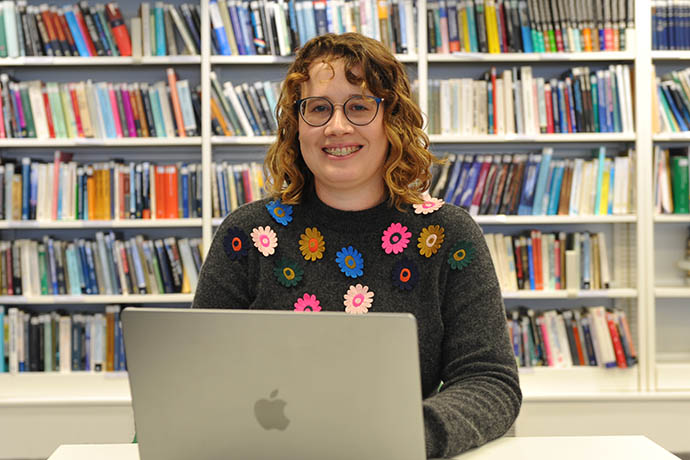
Rebecca Emerton is part of a team that tries to improve ECMWF’s weather model by looking for the causes of errors. She is also helping the EU’s Copernicus Climate Change Service (C3S), which is implemented by ECMWF, to draw up its yearly review of the climate.
Rebecca first became interested in weather forecasting when she experienced a category four hurricane in Florida at the age of 13. Forecasts of the hurricane path she watched on TV inspired her to study the weather in greater depth.
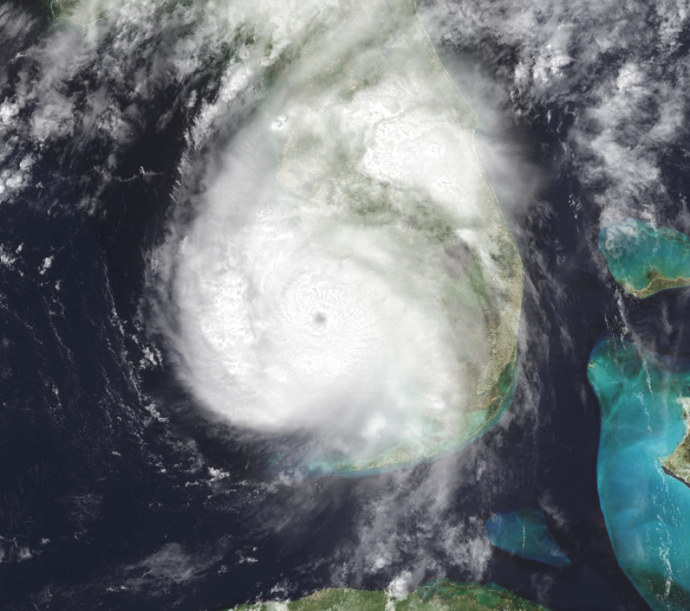
Rebecca experienced Hurricane Charley, which struck Florida in August 2004. This image shows Charley on 13 August 2004 at 18:15 UTC (US National Oceanic and Atmospheric Administration, NOAA).
A subsequent Master's degree in meteorology involved ECMWF. “I researched the skill of ECMWF and Met Office ensemble forecasts in predicting tropical cyclones,” she says.
She went on to do a PhD in flood forecasting at the University of Reading, UK, and in collaboration with ECMWF, from 2014 to 2018. This involved working closely with the Global Flood Awareness System (GloFAS), run by ECMWF for the Copernicus Emergency Management Service (CEMS). “I looked at the links between the El Niño/La Niña climate phenomenon and flooding around the world, and I worked on the development of the seasonal forecasting component of GloFAS.”
Rebecca’s subsequent PostDoc work with the UK’s National Centre for Atmospheric Science again involved ECMWF. She worked on a project to investigate the skill of tropical cyclone forecasts in southeast Africa.
“Cyclones Idea and Kenneth impacted Mozambique during the time we were researching forecasts of tropical cyclones in the region,” she says. “The UK Government’s then Department for International Development tasked a team of scientists from the Universities of Reading and Bristol and ECMWF to provide flood forecast bulletins during these cyclones to decision-makers on the ground.”
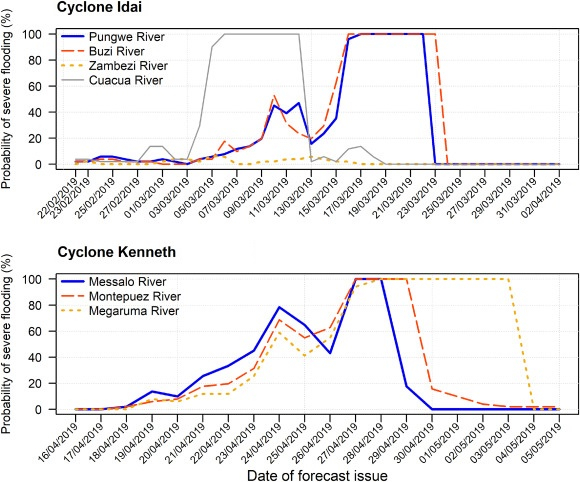
These charts show GloFAS forecasts for major rivers in southeast Africa during the time of tropical cyclones Idai and Kenneth, respectively. Each date shows the probability of severe flooding in the next 30 days, according to a forecast issued on that date.
In August 2020, Rebecca joined the diagnostics team at ECMWF, working to track down the causes of differences between the Centre’s weather forecasts and observed outcomes.
Work on tropical meteorology
The aim of Rebecca’s work in the diagnostics team is to understand the reasons for the performance of forecasts in the tropics. The ultimate aim is to make changes to the forecasting system to improve its performance.
“I’m looking specifically at tropical waves, which are like disturbances in the atmosphere near the equator that travel around the globe,” she says. The waves are associated with changes in atmospheric pressure and wind patterns, and cloud and rainfall formation.
Software has been developed at ECMWF to identify these waves in our Integrated Forecasting System (IFS). “What I’m working on at the moment is to use that software to identify how well the IFS represents these tropical waves, because they are of major importance for other aspects of the global weather.”
Examples of weather phenomena influenced by the waves are high-impact rainfall around the world and the formation of tropical cyclones. Rebecca identifies the waves in the forecast and compares them with ECMWF’s analysis of weather conditions at a particular time. An analysis is obtained by combining observations with a short-range forecast constrained by previous observations.
“This is very much work in progress. At the moment, we are producing animations for every new forecast to represent these waves and build up a database."
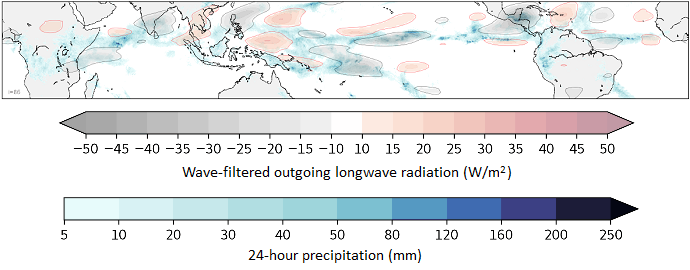
This image shows an analysis of Kelvin waves and precipitation on 5 November 2023. Rebecca is studying series of forecasts of three types of tropical waves – Kelvin waves, Rossby Waves and the Madden–Julian Oscillation – to assess how good they are.
Rebecca will also investigate if the forecasts should be included in the range of published output because they may be of interest to some users.
C3S Annual Reports
Since January 2023, Rebecca has also been working with the Climate Intelligence team on the European State of the Climate (ESOTC) reports C3S publishes every year.
This is about coordinating the writing and production of the report. There is a team of four lead editors and a science writer, who pull together contributions from scientists around Europe and the globe. Earlier this year, 73 people across 36 organisations contributed to the 2022 ESOTC report, published in April.
“In addition to my activities relating to weather forecasting, I’m also interested in doing work on climate timescales and climate change, so this was a great opportunity,” Rebecca explains.
The ESOTC reports provide an overview of the global climate of the year and a detailed look at the evolution of a wide range of key climate variables for Europe and the Arctic. C3S also produces monthly climate bulletins and provides information on long-term trends in global and regional climate indicators via climate indicators.
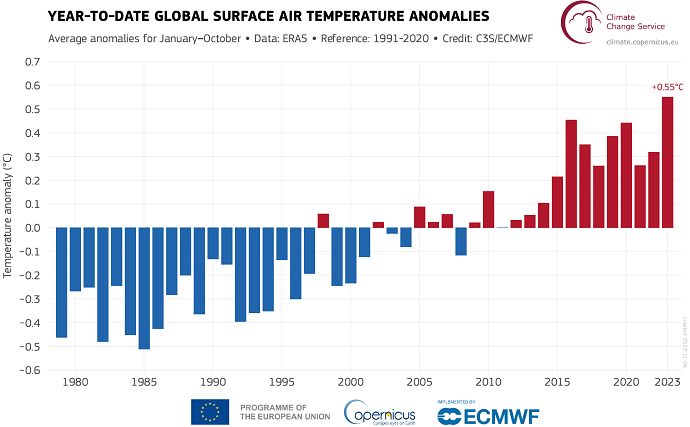
Average surface air temperature anomalies from January to October, according to ECMWF’s ERA5 reanalysis. This year is the warmest so far in the ERA5 dataset.
“The next C3S annual report is likely to be exceptional as 2023 is expected to be the warmest year ever recorded, and pulling it together will be of particular interest.”
